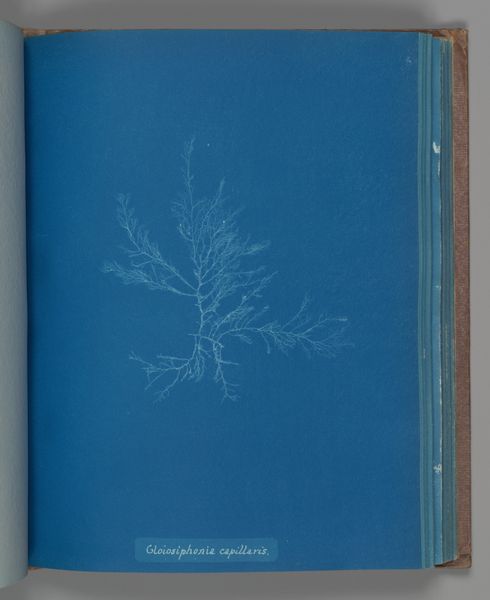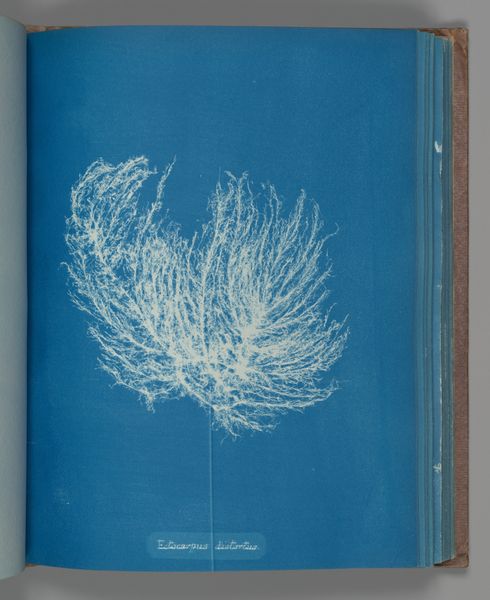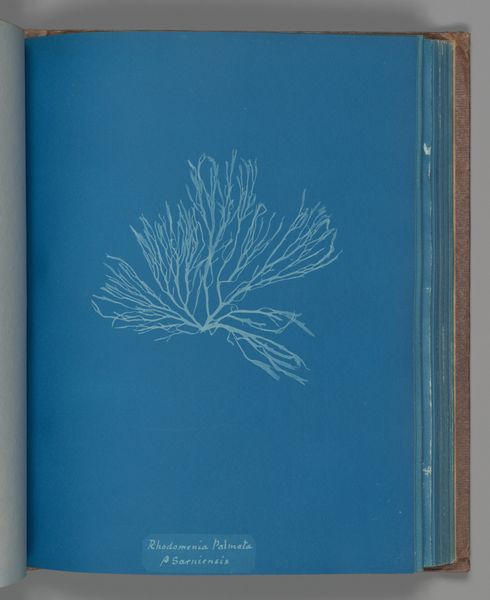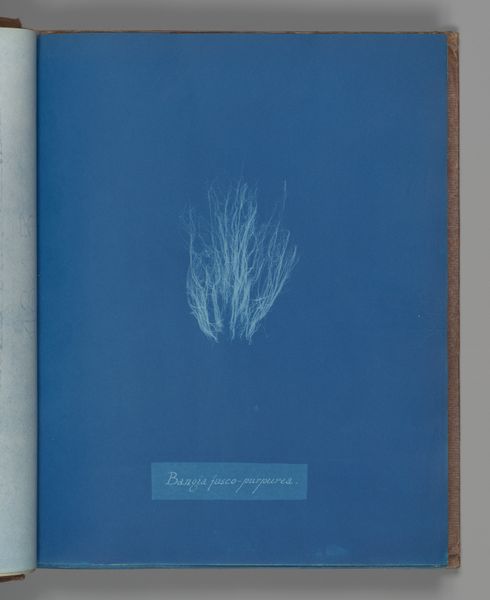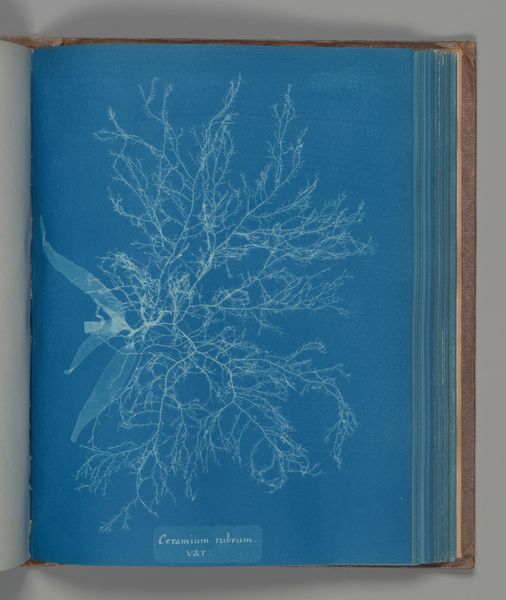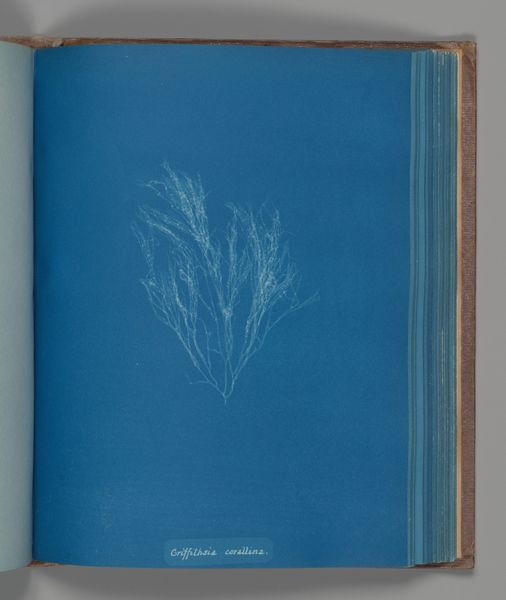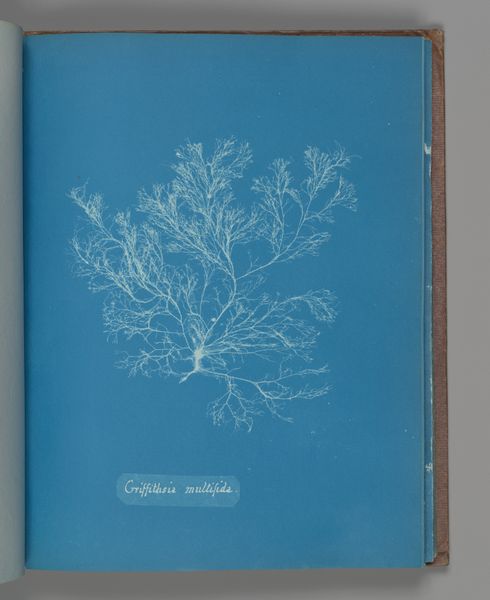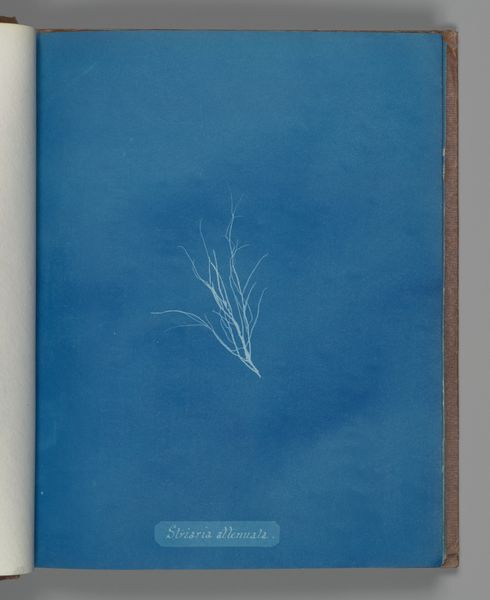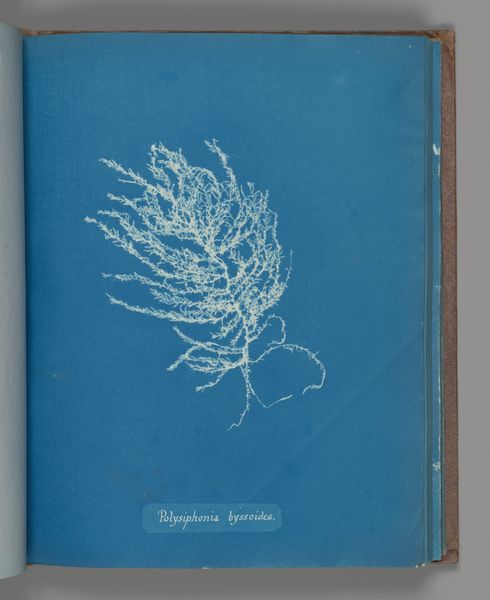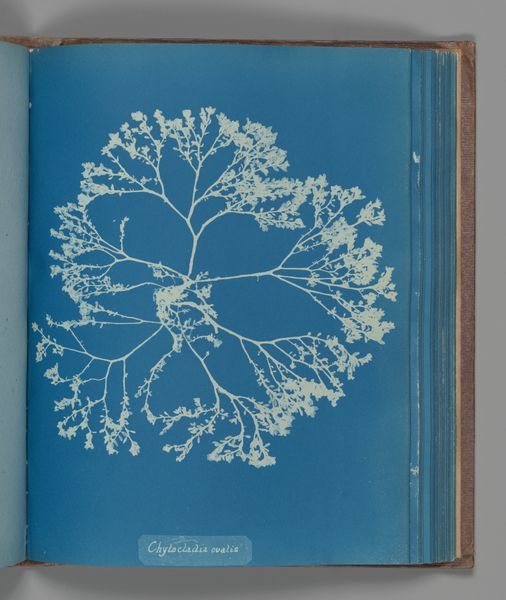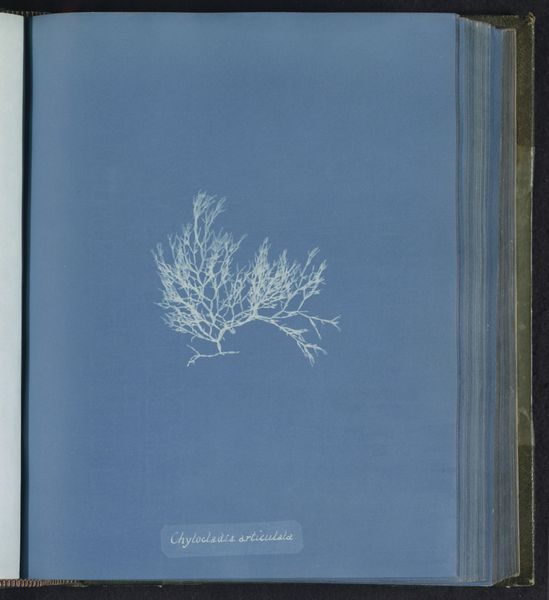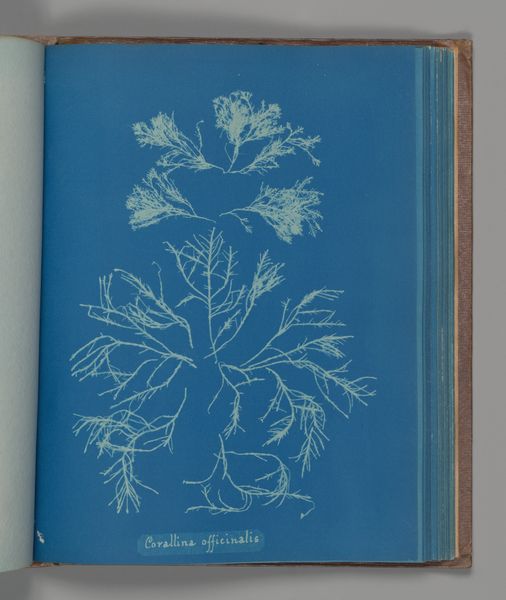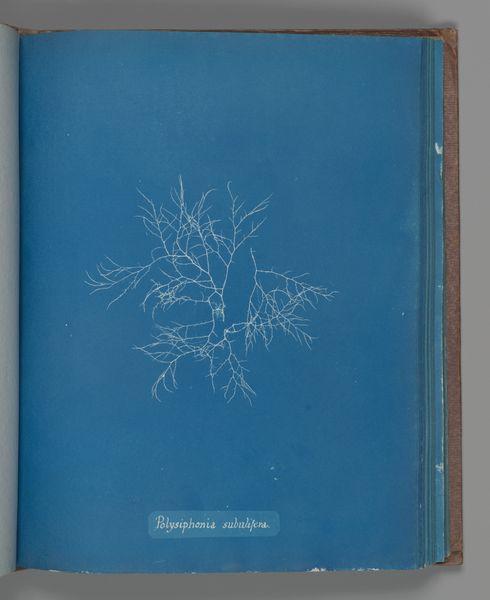
#
paper non-digital material
#
book design
#
personal journal design
#
personal sketchbook
#
book mockup
#
children publication design
#
plant
#
publication mockup
#
watercolour bleed
#
watercolour illustration
#
sketchbook art
Dimensions: Image: 25.3 x 20 cm (9 15/16 x 7 7/8 in.)
Copyright: Public Domain
Curator: This ethereal cyanotype presents Sphacelaria scoparia, a work by Anna Atkins dating from about 1851 to 1855, currently housed at the Metropolitan Museum. What's your immediate reaction? Editor: It's like looking into the heart of a twilight dream. The stark white of the algae against that deep Prussian blue evokes a profound stillness, doesn't it? The whole image feels like a whisper. Curator: Precisely. Atkins, a botanist, embraced the cyanotype process, a very early form of photography, to document and classify algae specimens. The process involves placing objects directly onto light-sensitive paper. The resulting image shows this negative of the algae form, detailed but seemingly floating in an azure sea. Editor: I’m struck by how modern it feels. The stark contrast and the subject floating in negative space, reminds me of minimalist design. But looking at the material—paper, light, simple chemistry, it makes it intimate, handmade. It bridges science and something… else. Curator: A vital point. There's a tension between the scientific objective of accurate representation and the accidental beauty the cyanotype reveals. It’s a very factual depiction that, by chance, produces an incredible aura and atmosphere. It's less cold observation and more reverential encounter. Editor: It almost renders the scientific a little irrelevant to the overall impact. You see, the beauty overpowers. Is that too critical? Is that simply how its historical value as botanical record fades behind something enduring? Curator: Not at all, I see it as enriching the art. The scientific foundation supports this dreamlike expression, grounding it, but allowing it a magical escape at the same time. This is about a factual object represented through a new scientific methodology turned art. It offers a special alchemy that can make an observer contemplate the very intersection of how we seek objective facts versus the emotional world in which we use it to comprehend beauty. Editor: Thinking about the composition itself too—just a central floating, radiating bloom against this sea of blue... I could look at that and contemplate nature for an eternity! Curator: So, what began as a systematic inventory metamorphosed into a work that lingers, resonates, challenges. Wonderful, really. Editor: Absolutely, it seems more vibrant to see things in such elemental fashion. Almost, childlike. What a privilege to ponder simplicity anew!
Comments
No comments
Be the first to comment and join the conversation on the ultimate creative platform.
